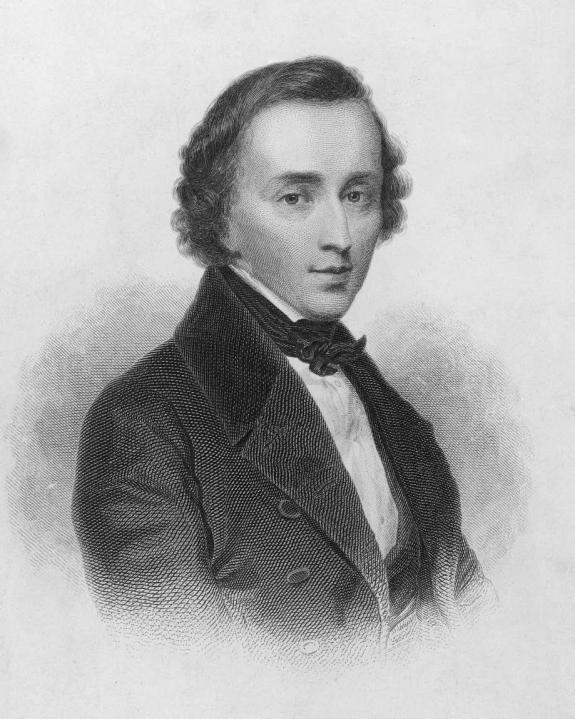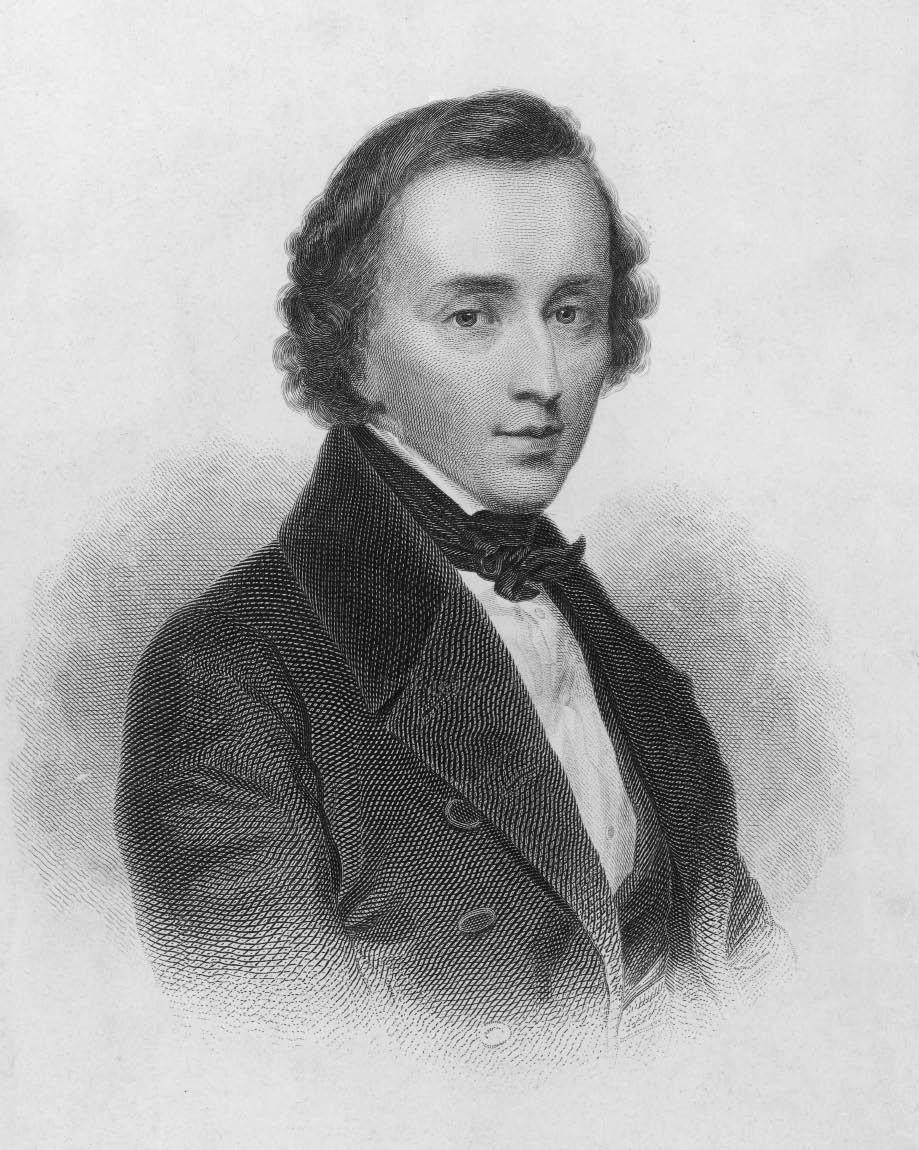Peter Phillips on the life and times of Chopin, who was born 200 years ago
The year 1810 may seem a little late to look for the beginning of the Romantic movement in music, but with the births of Chopin, Schumann and S.S. Wesley one could make a case. Think of the difference in the lifestyles of these composers, especially Chopin’s, when compared with those of their immediate predecessors. Where Mozart was tied to a court and lived more or less the life of a servant, these three travelled as they liked, the original freelancing musicians. Where Haydn was emotionally tied to the Church (and physically to a court), only Wesley relied on the Church for employment, and was famously outspoken about the low standards he found there, making himself thoroughly unpopular. Where Beethoven and Schubert travelled little and chose solitary lives struggling to make ends meet — forever composing by candlelight in garrets if the illustrators are to be believed — our anniversarians had more modern relationships, with well documented passions and stormy scenes (though not a lot of children). When one adds Mendelssohn, born the previous year, into the equation, the whole aspect of classical composition and its practitioners does seem to have undergone a fundamental change at about that time.
Of the three, Chopin — his unPolish name comes from the fact that his father was a French émigré — lived the most bohemian life, replete with restless travel, a famous mistress, ambivalent sexuality, an almost superhuman technique at the keyboard, a romantically early death from modish diseases and a love of nightlife which meant he was always tired. Much of this would resurface in the lives of the High Romantics, especially worship of the hero performer, but taken with his music Chopin’s world had a naivety in it which suggests the early stages of the movement. No doubt his constant illnesses and his longing for his native Poland depressed him in a thoroughly modern way, but there is an innocence alongside the passions which contrasts starkly with the internal struggles of someone like Wagner. There is nothing especially complicated about the total blackness in his Funeral March, nor about the delight in his ‘Black Keys’ Study in G-flat major. In fact, he himself said to his pupil Friedrike Streicher-Müller, ‘Simplicity is everything…. After having played immense quantities of notes, and more notes, then simplicity emerges with all its charm, like Art’s final seal. It is no easy matter.’ Of course many composers have wanted to pay tribute to simplicity. There are plenty around now who think they are children of nature and that their music comes from somewhere outside themselves, leaving them to be the modest vehicles of transfer. These days such talk is designed to be disarming; but I suspect Chopin meant it. And I suspect his affair with George Sand was similarly short on heavy-duty analysis.
Like Byron and Wordsworth, Chopin was so wrapped up in himself that he found it hard to love anyone else fully. This attribute of the Early Romantics caused some of them to share their lives, and sometimes their beds, with their siblings. Chopin himself was close to his sister Ludwika. After a visit she made to France in 1844, he wrote: ‘We are mad with happiness’; but for most of his life his take was either to flirt with young and beautiful girls, or to find something like the opposite. When he first met George Sand, at a soirée given by Franz Liszt, he wrote: ‘What an unattractive person La Sand is. Is she really a woman?’ He also had negative things to say about her habit of smoking a pipe (she later changed to cigarettes to humour him) and the speed with which her skin aged as a result of this smoking, accentuating her double chin. But there was something about a masculine woman who mothered him that he found at least necessary, and for nine years, between 1838 and 1847, they were more or less inseparable. He died at the age of 39, shortly after the stormy conclusion of this affair, his pallor and the fact that he had to be carried on to the stage to play adding so much to his allure that Pauline Viardot remarked ‘all the grand Parisian ladies considered it de rigueur to faint in his room’. At his last public appearance he is said to have weighed less than 45kg.
All this could be the stuff of an early 19th-century novel, several of which George Sand in fact came to write. And I have not detailed the bohemian setting at Sand’s house at Nohant, nor the friendships with leading artists who were not musicians, including Eugène Delacroix, who painted Chopin’s portrait, originally a double portrait with Sand. Nor have I discussed the originality of his piano music, which opened up so many new avenues in terms of form and types of passage-work that the 19th century scarcely had time to explore them all. Yet I am convinced the Romantic period started in earnest with Chopin, and only him. Despite his lack of Freudian self-awareness, there were no half-measures in the way he lived and wrote. Like many early Romantics — from the poets mentioned above to artists like Caspar David Friedrich and J.M.W. Turner — Chopin threw everything he had into creating a mood, a kind of non-specific emotional haze, in his music. Such an excuse for formless meandering was the undoing of many later composers, as the High Romantic movement began to glorify sheer scale, but Chopin was most at ease in writing miniatures, always underpinned by a carefully considered structural framework.
If the early Romantic era in music is defined by writing miniatures expressive of indefinable yearning, while discovering what it was like to live outside the controls of 18th-century aristocratic society for the first time, Schumann’s life and work was also typical. He spent much of his adult life wooing the daughter of his teacher, a liaison that the teacher barred. Although the marriage eventually went ahead, following a long and turbulent court case, Schumann tried to commit suicide, after which he had himself admitted to a mental institution. He died there at the age of 46. Like Chopin, he was a first-rate pianist, who excelled at writing in the smaller forms. His music is less headlong than Chopin’s, taking fewer formal risks and concentrating on more delicate sentiments, yet he is still justly referred to as one of the great Romantics. All the composers mentioned here — Mendelssohn, Chopin, Wesley and Schumann — had trouble writing on a heroic scale. The next generation, led by Brahms, took up this challenge and solved it by constantly referring back to Beethoven. But they were Romantics of a different kind, more heavyweight and less instinctive. And they died older.







Comments